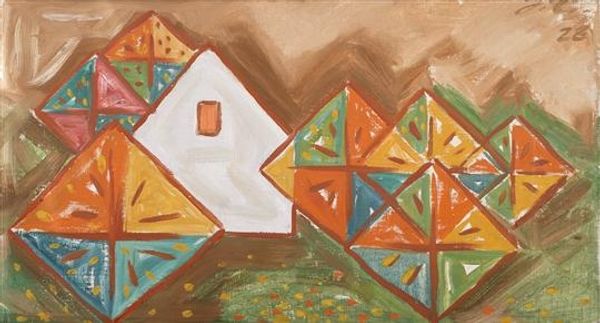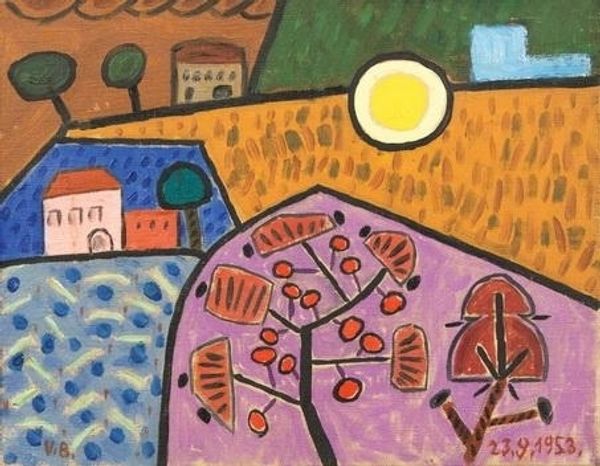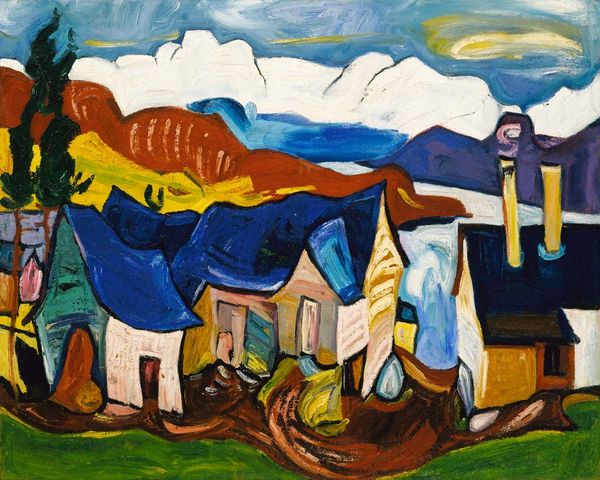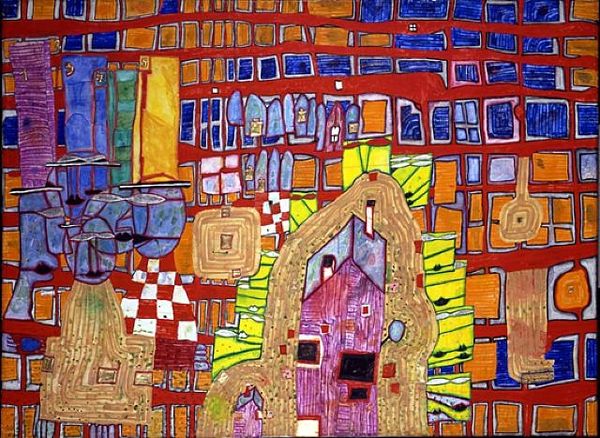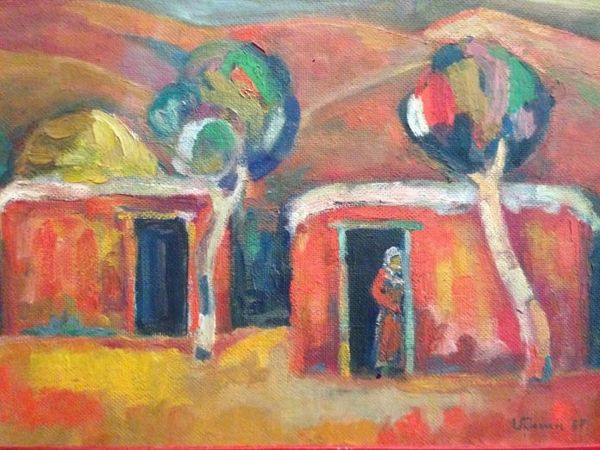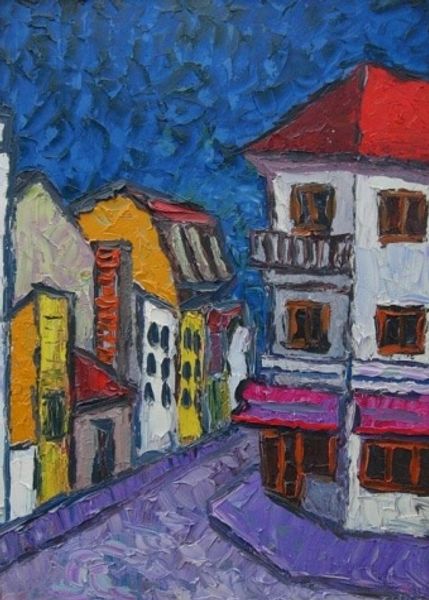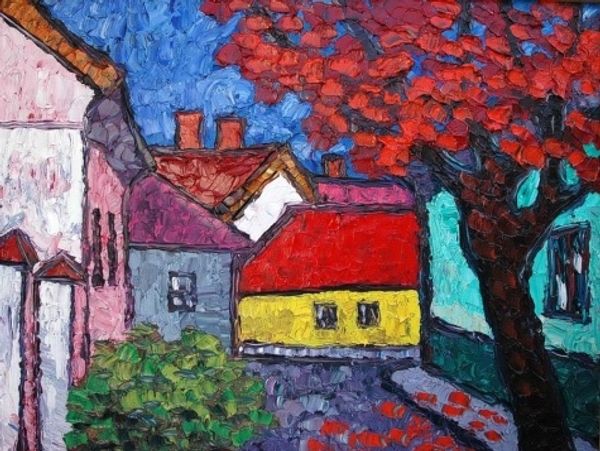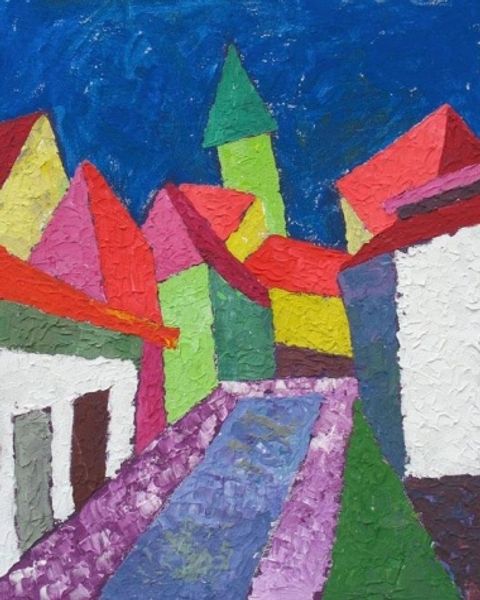
Copyright: Public domain
Editor: This is Josef Capek's "Letadlo," painted in 1929 using acrylic on canvas. It has a whimsical, almost childlike quality, with the simplified houses and patchwork fields. How do you interpret this work, considering the time it was created? Curator: This painting feels particularly relevant when we consider the rise of technology and aviation during the interwar period, and Capek’s experience during that tumultuous time. He lived through World War I and witnessed the early development of air travel, a symbol of both progress and potential destruction. The seemingly naive style can be viewed as a form of resistance against the looming threat of another war. Does the presence of that tiny airplane feel celebratory or ominous to you? Editor: I hadn't thought of it that way, I saw the plane as simply part of the landscape. But now that you mention it, given Capek's later imprisonment and death in a concentration camp, the airplane could signify impending danger, contrasting with the seemingly idyllic scene. Curator: Exactly. And consider the perspective – almost as if we're children looking up at this world, both enchanted and vulnerable. The bright colours and simplified forms, characteristic of Expressionism and Fauvism, mask a deeper unease. The geometric patterns, creating a landscape of clearly demarcated parcels, can be seen as reflections of social division. Editor: It's amazing how much historical and political context is packed into what seems like a simple painting. I will never look at an expressionist landscape painting the same way. Curator: Precisely. Art often acts as a mirror reflecting not only the artist's vision, but the anxieties and aspirations of an entire era. Looking at "Letadlo" through the lens of history illuminates those hidden meanings.
Comments
No comments
Be the first to comment and join the conversation on the ultimate creative platform.
